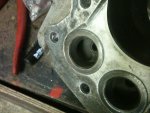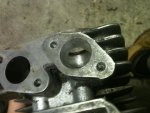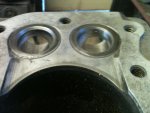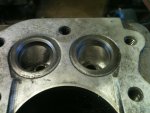Hey, awesome thread. Thank you!
I've been working on and researching cars for about 13 years now, so I follow almost everything that you're talking about except when you talk about the areas like floors, throats, seats, and bowls. So I learned something new tonight.
I wanted to make a comment about this subject. In order to achieve proper flow throughout all cylinders, each cylinder should be the same mass (E.g. Mike said the original ports flowed at 148 c.f.m. (cubic feet per minute), and after the porting was finished, the port flowed at 201 c.f.m. Well, all ports should be close, if not match, the 201 c.f.m. Which it looks like the OP did.
Cylinder #1 should = 201 c.f.m. or very close to it
Cylinder #2 should = 201 c.f.m. or very close to it
Cylinder #3 should = 201 c.f.m. or very close to it, and
Cylinder #4 should = 201 c.f.m. or very close to it
Mass production cylinder heads from the factories that create them aren't matched most of the time, they have discrepancies, but they also have tolerances. As long as the head is within the manufacturers' tolerances, they send it out to be built and placed on a vehicle that will be sent to the customer.
My second comment is that when porting an aluminum head with a porting bit; the bit should ONLY be used for aluminum. So if someone used a porting bit on a metal head, they shouldn't use it on an aluminum head. There should be 1 specific bit for each metal; in order to prevent contamination of the metals.
Again, awesome write-up, you seem to know exactly what you're talking about on this subject.

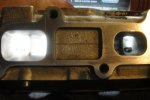

 and now i'm in trouble
and now i'm in trouble

